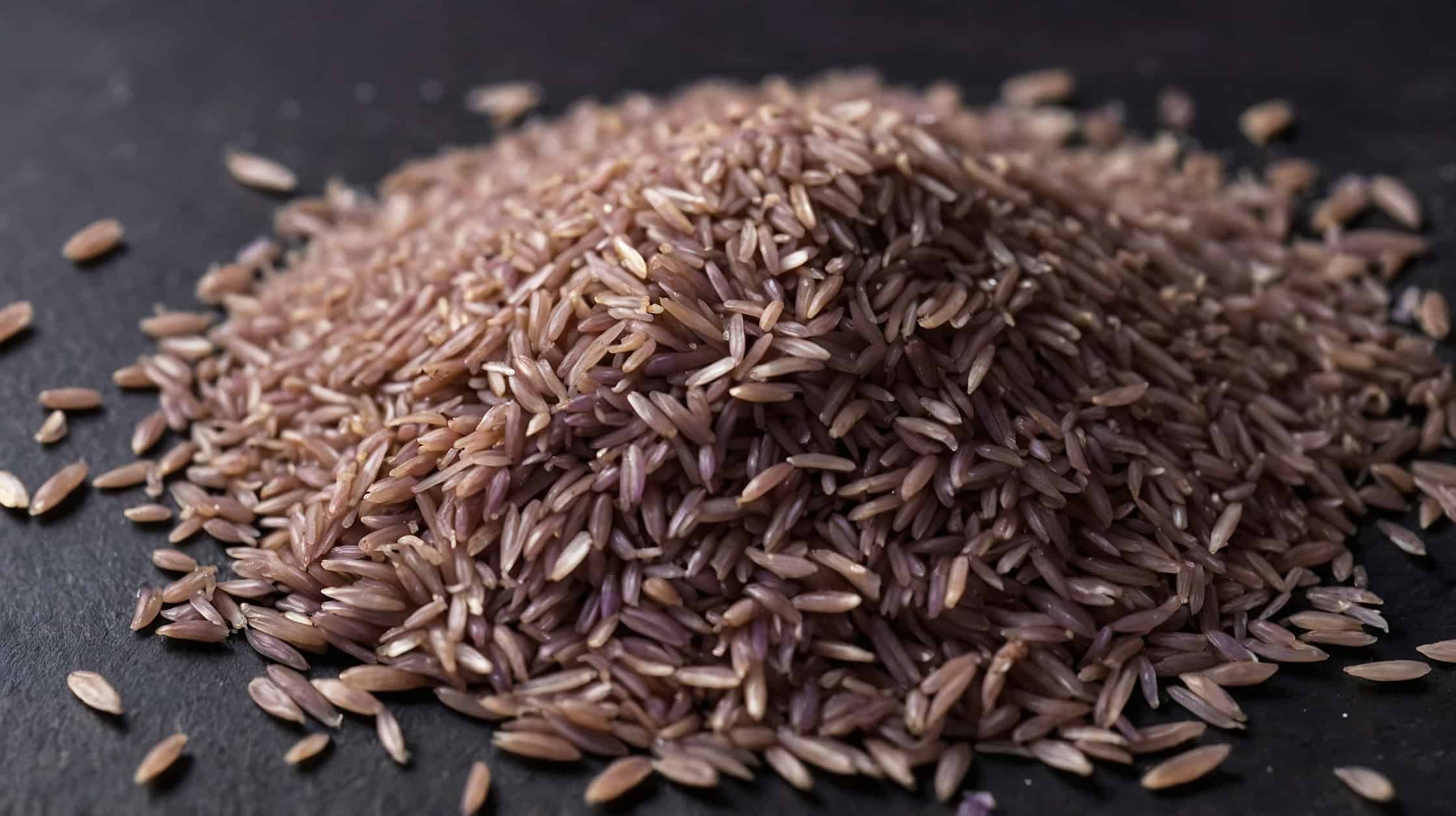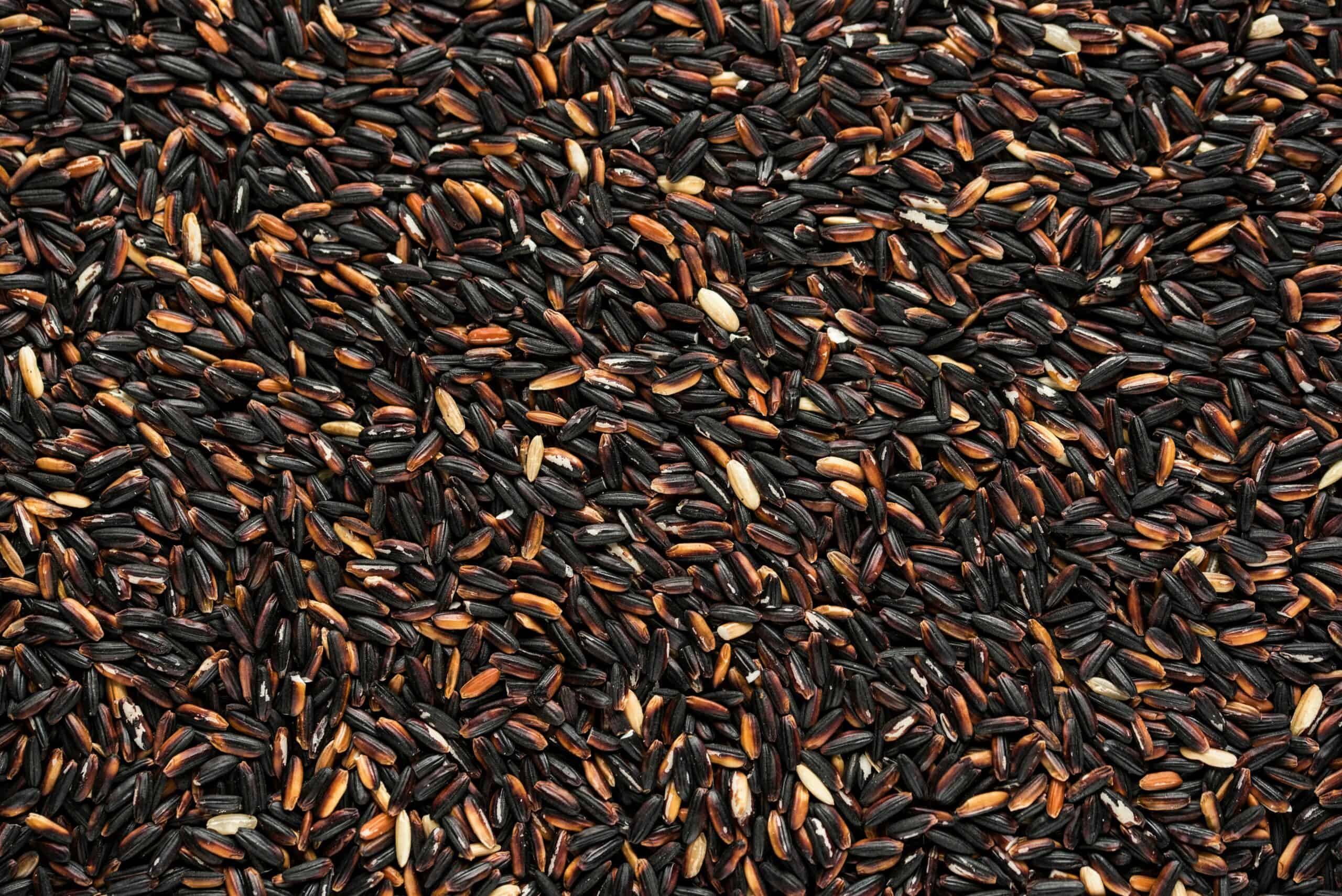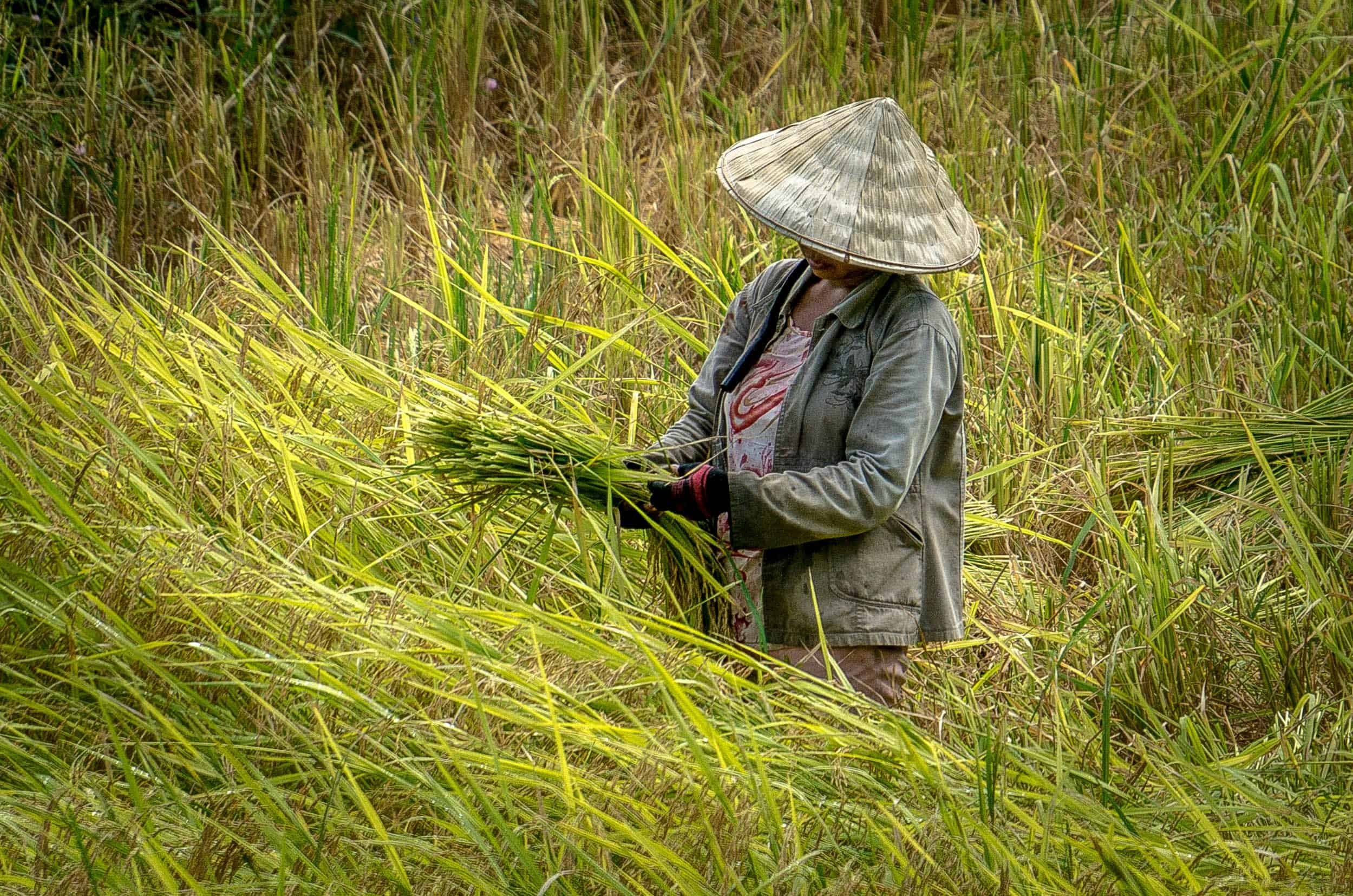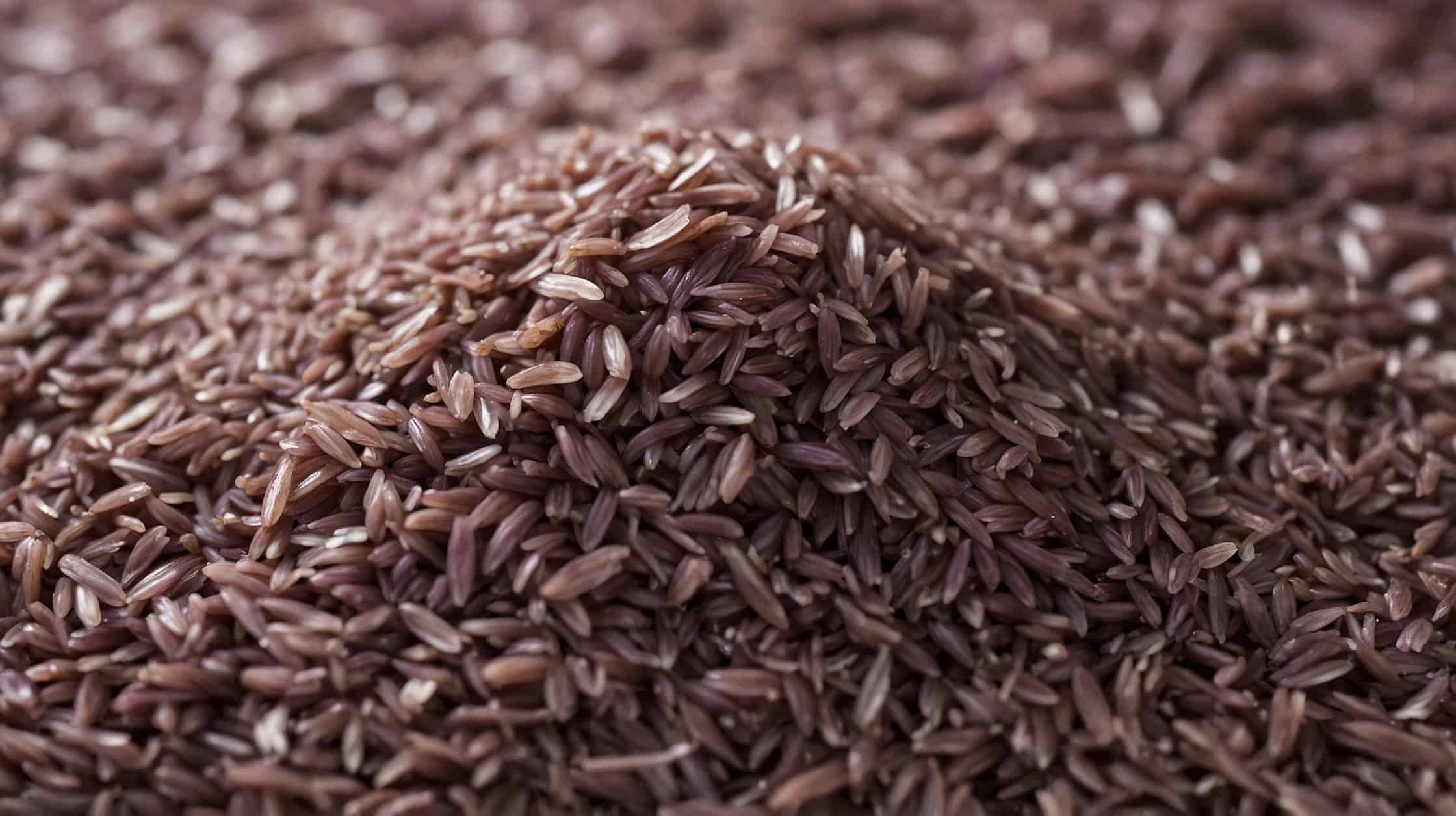Korean purple rice, also known as forbidden rice or heukmi bap, is a staple in Korean cuisine that's gaining popularity around the globe. This unique rice gets its vibrant purple hue from combining black rice with white rice. When cooked, the black rice stains the white rice, resulting in the eye-catching color.
Known for its potential health benefits, Korean purple rice is rich in antioxidants, fiber, and essential nutrients. It was once referred to as forbidden rice because, in ancient China, it was reserved for the emperors due to its rarity and nutritional value.
Korean purple rice is not just about looks and nutrition; it's also about taste and versatility. It’s slightly nuttier and chewier than regular white rice, making it a favored choice in many Korean homes and restaurants.
For those interested in trying it out, you can easily make it using a rice cooker, instant pot, or even a Dutch oven.

Jump to:
🌾 Understanding Korean Purple Rice
Origin and Names
Korean purple rice, also known as heukmi bap, is made by mixing white rice with black rice. Heukmi means "black rice" in Korean. This dish is popular in Korea because it boosts both flavor and nutritional value.
The nickname "forbidden rice" comes from ancient China, where black rice was reserved for royalty due to its health benefits. The mix includes black rice, sweet brown rice, and barley rice, making it a staple in Korean homes.
Types and Varieties
Heukmi bap includes several types of rice:
- White Short Grain Rice: Forms the base.
- Black Rice: Adds color and nutrients.
- Sweet Brown Rice: Enhances texture.
- Barley Rice: Adds flavor and health benefits.
Black glutinous rice, another variety, is particularly sticky and is used in desserts as well. Each type brings its unique texture and flavor, making heukmi bap versatile. These combinations ensure it’s both tasty and healthy.
Color Significance
The stunning purple color of Korean rice is due to black rice, which contains anthocyanin. When cooked, black rice turns the dish from white to various shades of purple.
Anthocyanin is found in many dark-colored fruits and vegetables and has antioxidant properties. This makes heukmi bap not just pretty but also beneficial for health. So, when people choose this rice, they're opting for both beauty and nutrition in one dish.
Comparison With Other Varieties
Compared to white rice, Korean purple rice has a chewier texture and a more complex flavor. White rice is known for its neutral taste and fluffy texture, while purple rice's mix of white and black grains creates a more interesting mouthfeel and deeper taste.
When comparing it to brown rice, the chewiness is somewhat similar, but purple rice is less dense. Brown rice tends to be more fibrous and has a stronger, more earthy flavor. On the other hand, purple rice strikes a balance between chewiness and softness.
Black sweet rice, another comparison point, shares similarities with purple rice in glutinous texture but is often even stickier. Purple rice offers a blend, combining the slight glutinous quality of black sweet rice with the familiarity of white rice.

🍛 Culinary Uses of Korean Purple Rice
Traditional Dishes
In Korean cuisine, purple rice is often mixed with glutinous rice and served alongside main dishes. It pairs well with hearty Korean stews and soups like kimchi jjigae and doenjang jjigae. The rice adds a pleasant chewiness and a visually appealing contrast.
Another traditional use is in bibimbap, a mixed rice dish topped with vegetables, meat, and a spicy gochujang sauce. The purple hue of the rice makes the dish look even more appetizing. Additionally, it’s used in various multigrain rice mixes (japgokbap), which are believed to be healthier and richer in nutrients.
Modern Recipes
Modern recipes have embraced purple rice for its unique color and health benefits. It’s now commonly found in salads, giving a burst of color and a nutty flavor. A popular modern recipe is a purple rice and vegetable salad, often mixed with fresh greens, avocado, and a tangy dressing.
In fusion cuisine, purple rice sushi has gained popularity. This innovative twist on traditional sushi features purple rice paired with fresh fish or vegetables, creating a striking visual appeal. Sweet rice-made desserts, like mochi and puddings, also use purple rice for added texture and color.

🍚 Preparing Korean Purple Rice
Required Utensils
To make Korean purple rice, you'll need some specific utensils. A rice cooker or an Instant Pot can make the process easier. These devices often come with a timer and preset functions that ensure your rice cooks perfectly.
If you don't have a rice cooker or Instant Pot, a heavy-bottomed pot will also work well. Heavy-bottomed pots retain heat better and prevent the rice from burning. Additionally, a rice paddle is helpful for stirring and serving the rice without it sticking.
You'll also need a fine-mesh strainer for rinsing the rice and a measuring cup to get the water ratio right. A timer can be useful if you're cooking on the stovetop to keep track of soaking and cooking times.
Rinsing and Soaking
Before cooking Korean purple rice, rinsing is crucial. Place the white and black rice in a fine-mesh strainer and rinse it under cold water. Rinse and drain several times until the water runs clear. This step removes excess starch and prevents the rice from becoming too sticky.
Soaking is also important for even cooking. After rinsing, let the rice soak in water for about 30 minutes. The soaking process helps the grains absorb water, which results in a better texture and fluffiness when cooked. Some recipes may even recommend soaking for up to an hour for optimal results.
Cooking Methods
There are several methods to cook Korean purple rice. In a rice cooker, simply add the rinsed and soaked rice to the inner pot, followed by the correct water ratio. Usually, it's equal parts water to rice. Set the rice cooker to the regular or mixed mode and let it do its job.
Using an Instant Pot is also an effective method. Place the rice and water in the pot, set it to pressure cook on high for 10 minutes, and allow natural release for about 5-10 minutes.
If you’re using a stovetop, combine the rice and water in a heavy-bottomed pot. Bring it to a boil, then reduce the heat to low, cover, and simmer for 20 minutes. Turn off the heat and let it steam for an additional 10 minutes before fluffing it with a rice paddle and serving.
Flavor Enhancements
For richer taste, use stock or coconut water instead of plain water. These liquids infuse the rice with extra flavor without overpowering it.
Adding a pinch of salt can also elevate the natural flavors. If you’re feeling adventurous, mix in some herbs or spices like garlic, ginger, or turmeric. These not only enhance the taste but also add color and aroma.
A splash of sesame oil can give the rice a fragrant, nutty note. Don’t forget to stir the rice well before serving to ensure even distribution of flavors.

🍙 Nutritional Profile and Health Benefits
Macronutrients and Micronutrients
Korean purple rice is a whole grain that contains a high level of essential nutrients. A typical serving of purple rice offers a good amount of protein and carbohydrates, which provide energy. It's also rich in iron, which is crucial for blood health.
In addition to protein and iron, purple rice contains vitamins like vitamin E. It also has a moderate amount of healthy fats. These nutrients make it a valuable addition to any diet.
Antioxidant Properties
One of the standout features of Korean purple rice is its high antioxidant content. The antioxidants found in purple rice, such as anthocyanins, help protect the body from harmful free radicals.
These compounds are known to reduce oxidative stress, which can lower the risk of chronic diseases. Including this nutrient-dense rice in your meals can provide a significant boost to your overall health and well-being.
Dietary Fiber and Digestion
Purple rice is known for its high dietary fiber content. Fiber is essential for good digestion and helps maintain a healthy gut. A 100-gram serving of purple rice provides approximately 2.2 grams of fiber.
Fiber promotes regular bowel movements and prevents constipation. This makes purple rice a great choice for those looking to improve their digestive health.
Heart Health and Anti-inflammatory Benefits
Eating purple rice can also benefit your heart. The antioxidants in the rice help reduce inflammation, which is a risk factor for heart disease. Its whole grain properties contribute to better heart health by maintaining healthy cholesterol levels.
Additionally, the anti-inflammatory properties of purple rice can help manage chronic inflammation. This can lead to reduced risks of heart disease and other inflammation-related conditions. This vibrant grain is not just tasty but also supports a healthy lifestyle.
🍘 Handling Leftovers
Leftover purple rice can be stored in an airtight container in the fridge for up to 5 days. It's important to cool the rice to room temperature before storing to prevent condensation.
When reheating, transfer the desired amount to a microwave-safe bowl and cover it with a damp paper towel. Microwave on medium heat for 1-2 minutes, stirring halfway through to ensure even heating.
Alternatively, you can reheat the rice on the stovetop with a splash of rice water or plain water to keep it fluffy and moist. Add a bit of barley or millet for added texture and nutritional benefits.
Leftover purple rice can also be transformed into delicious fried rice by adding vegetables, eggs, and a bit of soy sauce.
🫙 Storage and Preservation
Storing Cooked and Dry Rice
Cooked Rice: Cooked Korean purple rice should be stored in an airtight container. This keeps moisture in and prevents it from absorbing other odors. For the best results, refrigerate within two hours of cooking.
Cooked rice can last in the fridge for up to 4-6 days. If longer storage is needed, freezing is an option. Portion the rice into small, freezer-safe bags or containers, and it'll last for about six months.
Dry Rice: Dry Korean purple rice needs a cool, dry, and dark place. A pantry or cupboard works well. Use an airtight container to protect it from insects and moisture. Ensure the container is clean and dry before storing the rice.
By doing this, dry purple rice stays fresh for up to a year. It's essential to keep it away from strong-smelling substances, as rice can absorb odors easily.
❓ Frequently Asked Questions
To prepare Korean purple rice, combine white rice and black rice, rinse multiple times, and cook with a 1:1 water ratio. For a stovetop method, bring the water to a boil, then simmer on low heat for 15-20 minutes before fluffing with a fork. Using a rice cooker is another convenient option.
Korean purple rice is high in antioxidants thanks to the anthocyanin pigments. It's also rich in fiber, aiding digestion, and contains essential minerals like iron and magnesium. These nutrients contribute to overall heart health and can help reduce inflammation.
Korean purple rice pairs well with many dishes. It's a great match for Korean BBQ, bibimbap, and stews like kimchi jjigae. For a more Western twist, try it with grilled vegetables or roasted chicken for a nutritious and colorful meal.
The terms purple rice and black rice are often used interchangeably. However, purple rice generally refers to a mix of white and black rice, resulting in a purple hue when cooked. Black rice, or forbidden rice, is a whole grain with a dark color and slightly different texture.
Korean purple rice has a slightly nutty flavor and a chewy texture. It's less sticky than traditional white rice and more flavorful. This makes it a unique addition to meals, providing a hearty and satisfying bite.
When choosing a brand, look for non-GMO and organic options for higher quality. Check the packaging for mixed rice varieties that suit your taste preferences. Reading reviews can also help you find a reputable brand with consistent quality.





Comments
No Comments